The software development life cycle ( SDLC ) is an organized method for producing low-cost, high-quality software products quickly. It divides the entire software development process into several phases to ensure that a software product under development meets the specified requirements and operates as expected.
There are different processes and practices the development team leverages to go through the phases of SDLC. These processes and practices are referred to as SDLC methodologies. With various SDLC methodologies out there, the waterfall model is among the oldest and most traditional ones.
Introduced by Winston Royce in 1970, the waterfall model is the first model in SDLC. It was the earliest SDLC methodology for software development. With the introduction of new SDLC methodologies, like Agile, the use of this model has reduced significantly.
This blog post aims at explaining to you what exactly the waterfall model is, its different phases, advantages, and disadvantages.
So, let us begin our discussion!
What is a Waterfall Model? [Definition]
This classical model is the most basic and conventional SDLC model for producing top-notch software solutions. Often, we refer to this model as the linear-sequential life cycle model. It is an elementary model and painless to comprehend. Though it is rarely employed these days, it is very significant because it forms the basis for all other modern methodologies.
Furthermore, this approach divides the whole software development life cycle into different segments called phases. Each phase starts only after the complete execution of its previous one. Hence, the output of the current phase serves as the input for the next phase. This forms the basis for this model's greater concision and clarity.
As the execution of phases takes place in a sequential manner downwards, i.e., from the higher level to a lower level, like a waterfall, hence, the name waterfall model. In this paradigm, the phases do not overlap.
When Should You Use the Waterfall Model?
You can leverage this model for software development when:
- The application you need to develop is small and simple.
- The specifications for the applications are concise and don't change very often.
- No ambiguous requirements. This means that the requirements are crisp, concise, and easy to understand.
- Tools and techniques used for application development are stable and not dynamic.
- Resources are readily available and well-trained.
Phases of Waterfall Model
Let us now shed light on the different phases of the waterfall model.
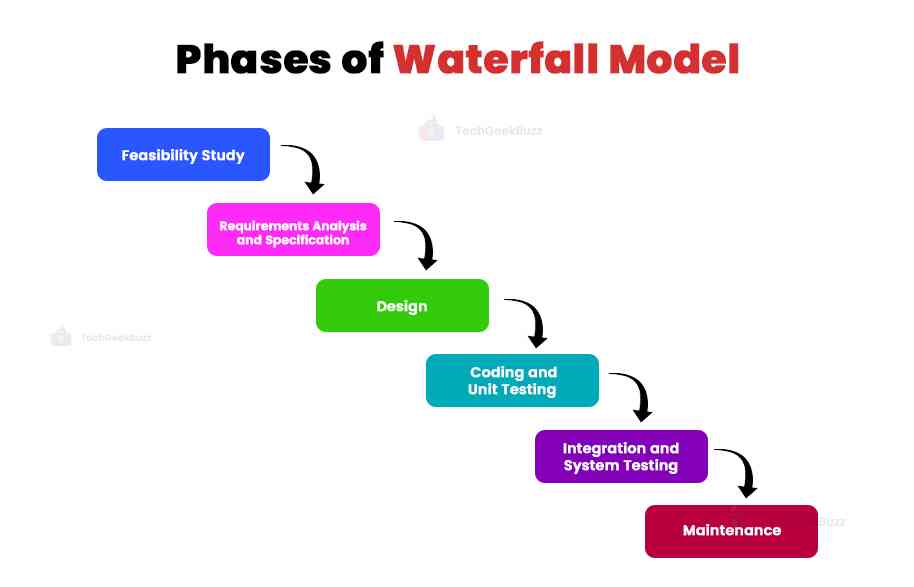
1. Feasibility Study
The first phase, called feasibility study, entails determining whether it is viable to develop a software product practically as well as financially. Initially, this phase involves understanding the problem for which the solution in the form of a software application is to be developed.
Next, it involves proposing different strategies to solve that problem (implement the solution). Finally, this phase entails analyzing the pros and cons of each proposed strategy and choosing the best one that works well and fits your budget.
2. Requirements Analysis and Specification
The primary objective of the second phase, requirement analysis and specification, is to collaborate with the real users or customers of the software application, understand their requirements (features they are looking for), and document them properly.
Generally, this phase has two sub-phases, as follows:
-
Requirements Gathering and Analysis
This phase involves collecting the software requirements from customers and examining them thoroughly. Its primary motive is to eliminate incomplete and inconsistent requirements.
- Incomplete requirements: A requirement whose portion(s) is not available.
- Inconsistent requirements: A requirement whose one part contradicts another.
-
Requirements Specification
The analyzed requirements are then organized properly in a document called Software Requirements Specification (SRS). Basically, SRS acts as a mutual contract between the development team and customers.
3. Design
This phase entails the creation of system design by studying the requirements depicted in SRS. Also, it defines the overall architecture of the software product and its high-level design. In addition, the primary aim of the design phase is to transform the requirements in SRS into a format that enables coding using a programming language. Everything that takes place in this phase is documented in the Software Design Document (SDD).
4. Coding and Unit Testing
This stage involves putting the system design into practice. SDD contains every detail of the software architecture and system design that help developers carry out coding or implementation swiftly. They develop every module of the software design. Furthermore, the developed modules undergo testing to verify whether they function correctly, which is called unit testing .
5. Integration and System Testing
Once the development team develops all the modules of the software product and those modules undergo unit testing, the integration of modules takes place in steps. In every integration step, the tested modules are added to the existing partially integrated system. The integrated system undergoes integration testing , where the interaction between all the modules is verified.
After the integration of all the modules, a complete functional system forms that undergo system testing. System testing evaluates the entire integrated system as a whole to ensure that it is in accordance with the specified requirements.
6. Maintenance
This phase comes into practice after delivering the software product to the end users or customers. It is one of the most crucial phases of SDLC because the effort the development team makes in this phase is 60% of the total effort required to develop software. Typically, there are three kinds of maintenance, as follows:
- Corrective Maintenance: It entails fixing errors that end users discover in the software product after they start using it.
- Perfective Maintenance: It involves enhancing the software product by improving its existing features as per end users’ requests.
- Adaptive Maintenance: This sort of maintenance takes place when the software product needs porting to work in a new environment, such as on a new operating system .
Advantages and Disadvantages of the Waterfall Model
In this section, let us have a glance at the pros and cons of this classical model.
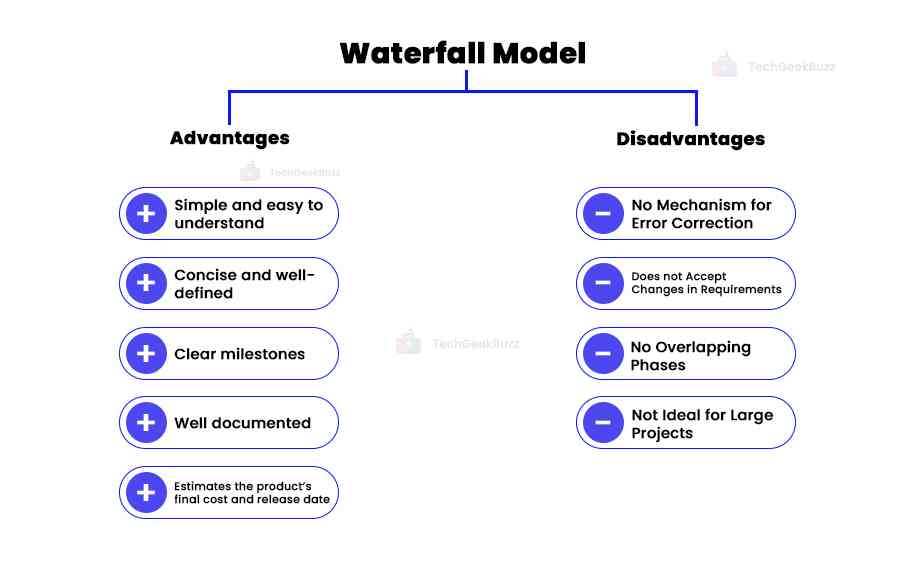
Advantages
- The model is pretty simple and easy to grasp.
- It involves the execution of each phase at once, which makes it more concise and understandable.
- Every stage of the model is well-defined. They have fixed starting and ending points.
- Milestones in this model are highly clear and easily comprehensible.
- Everything, from the design and process to actions, and results, is well documented.
- This model helps to determine the final cost and the release date of the software product.
Disadvantages
- No Mechanism for Error Correction: The software development process in this mode flows from one phase to the next. It considers that no error occurs during any phase. As a result, it does not offer a mechanism to fix errors. This means there is no going back to the previous phase.
- Does not Accept Changes in Requirements: This model considers that the requirements specified by the customers at the onset of the development process are complete and correct. It does not provide any scope for the changes in the requirements. So, if the customers wish to modify the existing requirement or wish to add a new requirement, this model does not support it.
- No Overlapping Phases: In this model, the next phase starts only after the execution of the current phase completes. Practically, this is pretty challenging to maintain as it results in increased cost and decreased efficiency.
- Not Ideal for Large Projects: This model is not suitable for large projects having ever-changing requirements.
Conclusion
That was all about the waterfall model. This classical model is the first SDLC methodology that forms the basis for all other modern methodologies. It is a linear sequential model that forces the development team to carry out each phase only after the execution of its previous phase. Even though it is not used as frequently these days, it is still highly important in SDLC because it forms the foundation for all other models.
We hope this article was enlightening and helped you to get a better grasp of the waterfall model. Feel free to share your queries or suggestions in the comments section below, if any.
People are also reading:
![What is Waterfall Model? [Phases, Pros, & Cons]](/media/new_post_images/Waterfall_Model.webp)

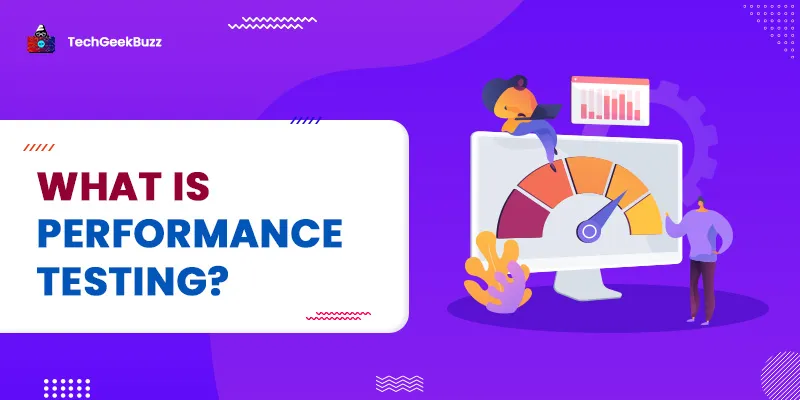
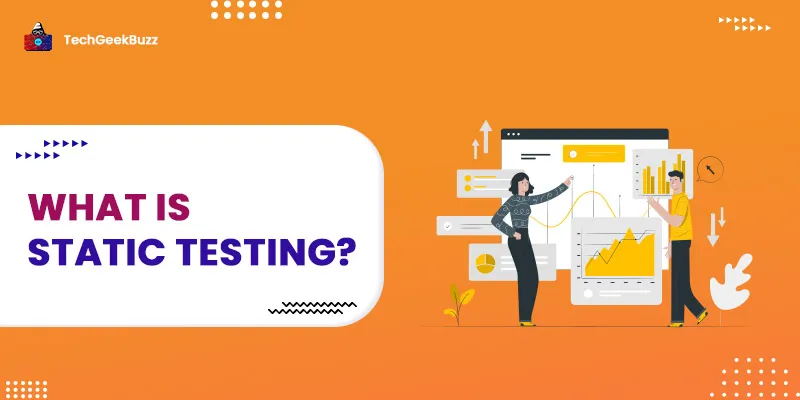
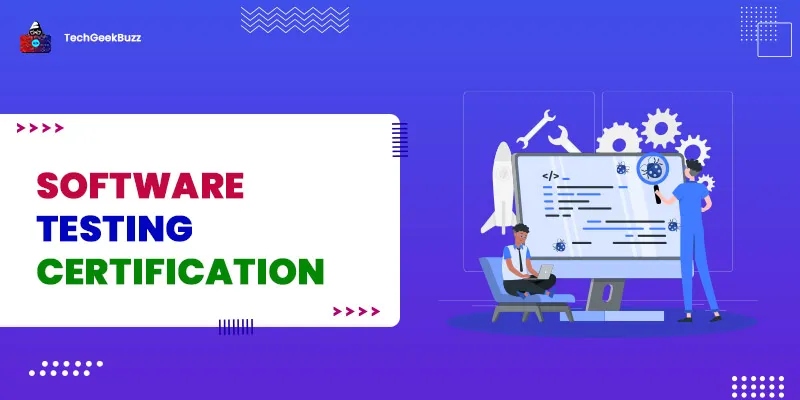
Leave a Comment on this Post